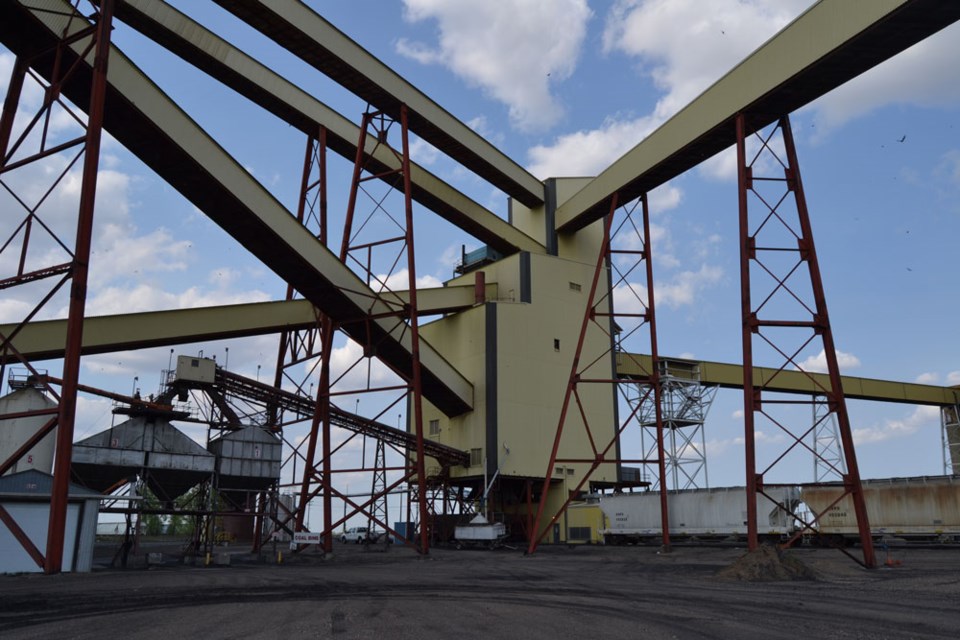There are plenty of different destinations the coal extracted by Westmoreland Coal Company goes to, after it’s taken out of the ground. Estevan’s plant operations have two major functions: a charcoal plant, and an activated carbon plant that both have coal brought to them directly from the mining operations.
“The char plant has been in operation for many years, and it’s used to make Kingsford charcoal briquettes. If you go to the store and buy those, that’s lignite char from the Estevan mine,” said Scott Greening, plant manager with Westmoreland Coal Company. “There have been a few changes with it. We’ve added a dryer so we can dry the coal before it goes through the char plant, which increases our productivity. That char’s shipped out by rail, to Kingsford, and some goes out by truck.”
Once the coal arrives to the facility by coal haulers, it’s put into a hopper and loaded into a central tower, called the tipple.
The tipple is attached to a network of conveyor belts, on several stories of the tower, that distribute the coal to the different plants and parts of the facility, including the calciner, and the activated carbon plant.
Each conveyor belt has coal loaded onto it by an operator who controls a series of mechanical gates. Where the coal is sent to, at the facility depends on which of those gates are open or closed. Some of the coal is sent down conveyor belts from the tipple to silos for safe storage.
In addition to the plants, there are load-out stations, where charcoal and activated carbon are loaded onto trains and trucks, respectively, for distribution.
Coal on the way to the calciner is sent along a conveyor belt to a dryer system. Once sufficiently dried, it goes up another series of conveyor belts to the calciner itself, a large, rotating sloped furnace. Once inside the calciner, a quantity of coal referred to as a bed, is rolled by a series of implements called rabbles lining the inside, and subjected to a high amount of heat.
“That burns up the excess ash and volatiles, and the (coal) ends up in the middle of the calciner,” said Greening. “Once it goes into the pit, in the middle of the furnace, it ends up coming out at the end of a spout, where it is taken away for shipping.”
Once ejected into a pile, the char is left to cure and cool for a period of two to three weeks, before being loaded onto rail cars.
Greening said that coal going to the activated carbon plant has been producing activated carbon since 2010. The activated carbon plant is a joint venture with a company called Cabot Canada.
Westmoreland’s responsibility is the operation of the plants, while Cabot’s portion is sales and marketing of what Westmoreland produces, Greening explained.
The entirety of the activated carbon Westmoreland produces is used to capture mercury emissions at coal-fired power plants. This means it goes directly to the power stations in the area, to capture mercury in the flue gases they release.
To be converted into activated carbon, the coal is sent up another series of conveyor belts after the proper sized coal is strained through a vibrating screen. Once it reaches the activat ed carbon plant, the coal is run through a series of furnaces which bear a similar design to the calciner, only it is actually 14 furnaces stacked on top of one another.
Greening said that as the coal goes through each layer, volatiles and impurities are burned off, and eventually steam and air are introduced to the coal to assist in the carbon activation process. Once released from the activated carbon plant, the product is put onto trucks to be distributed to customers in Alberta, Saskatchewan, North Dakota and Montana, and sent by rail to a distribution point in Missouri.




